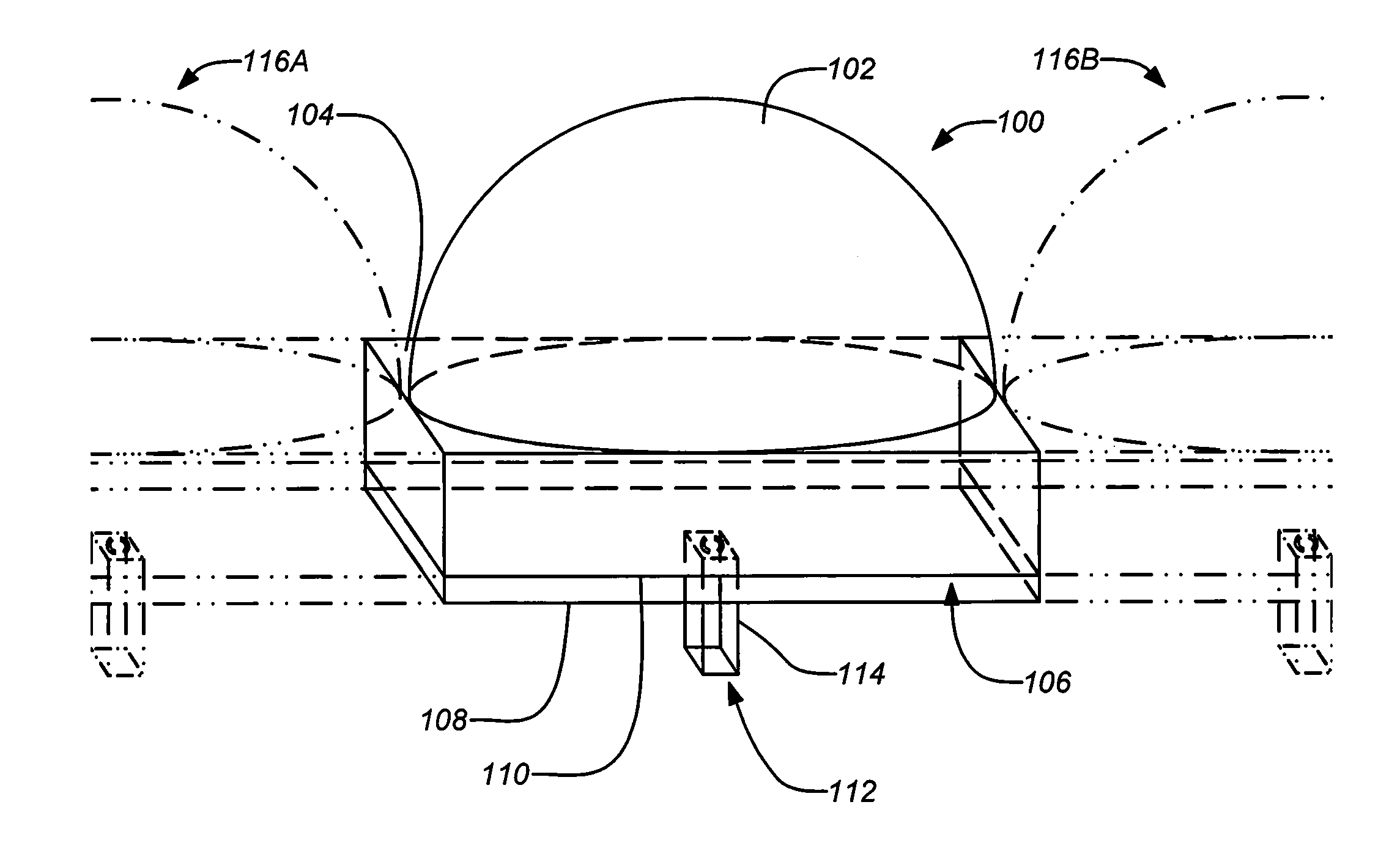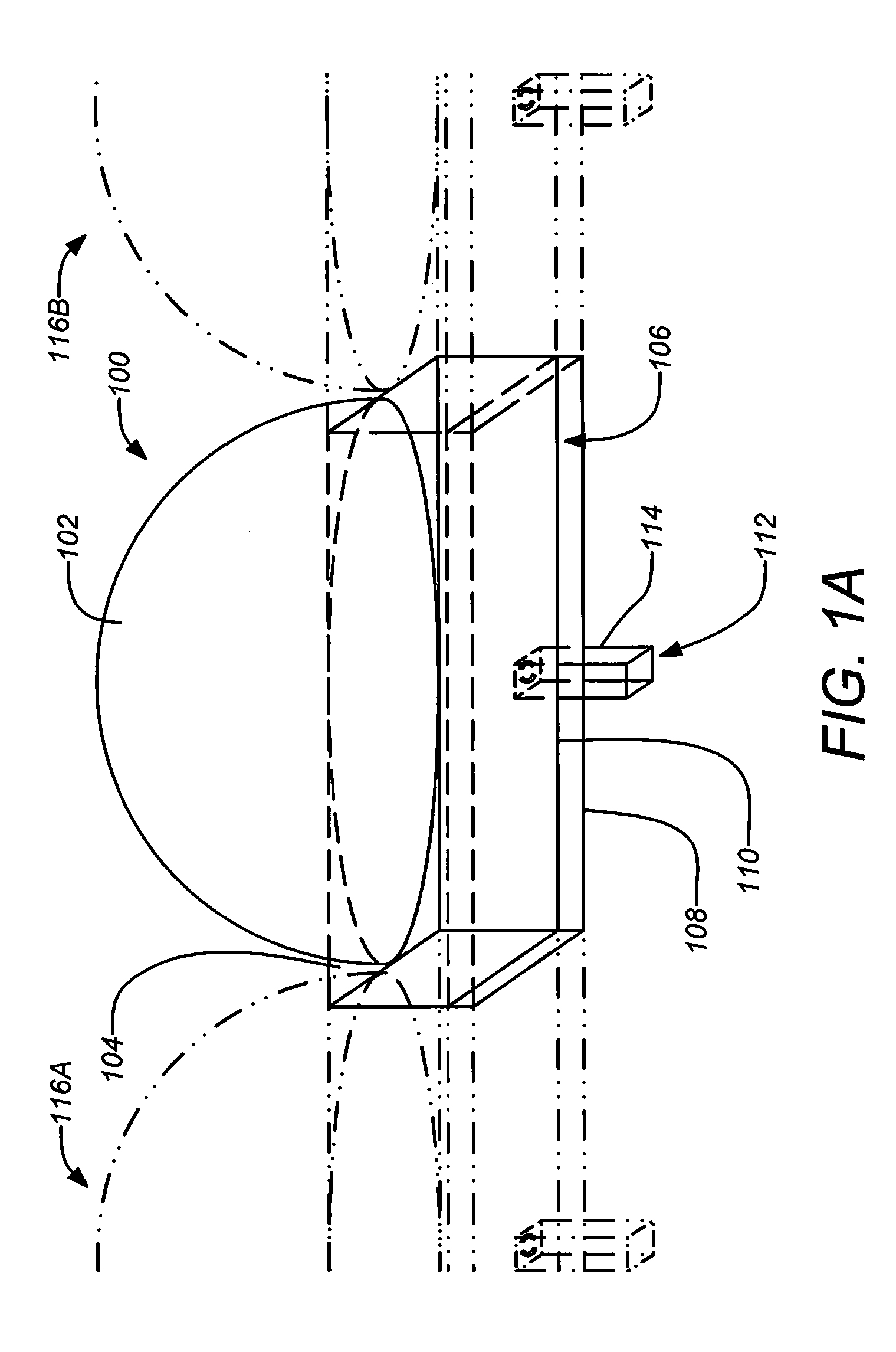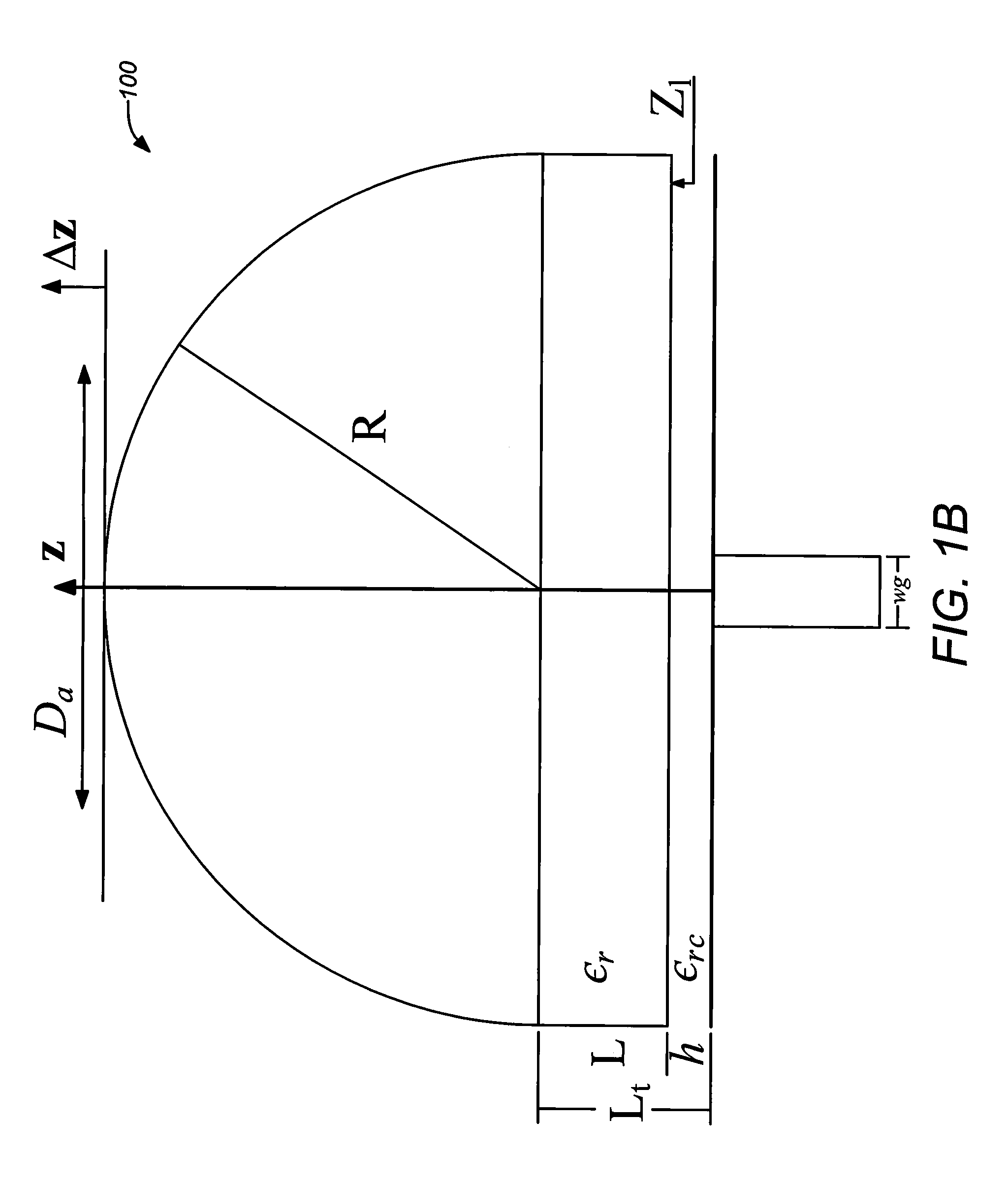Dielectric covered planar antennas
a planar antenna and dielectric technology, applied in the field of imaging planar antennas, can solve the problems of limiting the size of such an array design, difficult fabrication using such designs,
- Summary
- Abstract
- Description
- Claims
- Application Information
AI Technical Summary
Benefits of technology
Problems solved by technology
Method used
Image
Examples
Embodiment Construction
[0033]1. Overview
[0034]As mentioned above, embodiments of the present invention are direct to a novel antenna suitable for integrated arrays at terahertz frequencies. The antenna may include a waveguide feed, which can be integrated with Schottky detectors and mixers, that excites a silicon lens antenna through a leaky-wave or electromagnetic band-gap (EBG) resonant cavity. The cavity is used to both match the waveguide feed with the silicon medium and to illuminate the upper part of the lens.
[0035]Embodiments of the invention effectively address the issues described above by using an integrated silicon micro lens which can potentially be fabricated using photolithographic techniques. See e.g., Lee et al., “A glass reflowed microlens array on a Si substrate with rectangular through-holes,” J. Opt. A. 10 (2008) 044003, 2008, which is incorporated by reference herein. Example embodiments of the invention may employ an extended hemispherical lens antenna fed by a leaky wave feed. The p...
PUM
 Login to View More
Login to View More Abstract
Description
Claims
Application Information
 Login to View More
Login to View More - R&D
- Intellectual Property
- Life Sciences
- Materials
- Tech Scout
- Unparalleled Data Quality
- Higher Quality Content
- 60% Fewer Hallucinations
Browse by: Latest US Patents, China's latest patents, Technical Efficacy Thesaurus, Application Domain, Technology Topic, Popular Technical Reports.
© 2025 PatSnap. All rights reserved.Legal|Privacy policy|Modern Slavery Act Transparency Statement|Sitemap|About US| Contact US: help@patsnap.com



